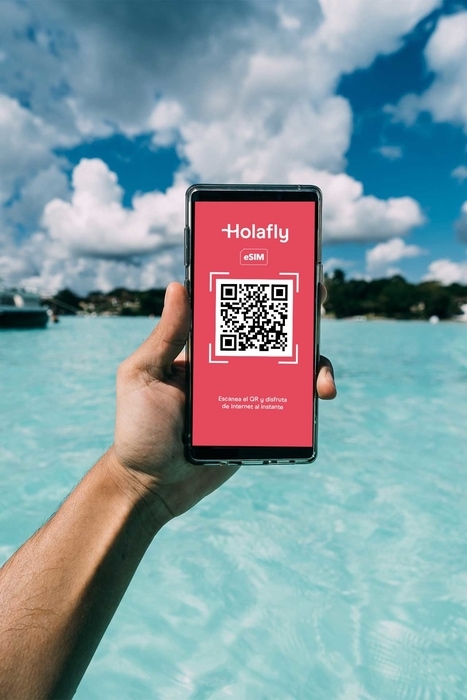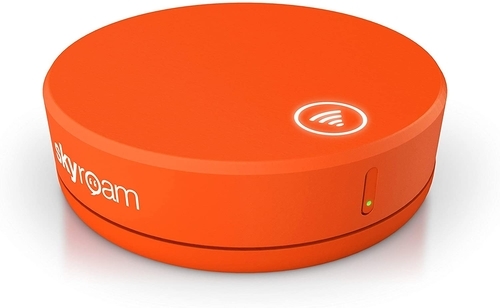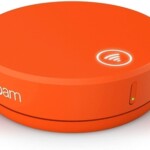When traveling abroad, get a policy from one of the best travel insurance companies. You can get a 5% discount on Heymondo, the only insurance that pays all medical bills upfront for you, HERE!
If you want Internet in Switzerland for work, study, or leisure, you’ll need to find an alternative to your usual SIM card. Switzerland doesn’t belong to the European Union, and it’s outside the European Economic Area, so even if you already have a European SIM card, there is no free roaming in Switzerland. This means that if you consume data from your usual SIM card, you may have to pay hefty international roaming fees when you return home.
Fortunately, there are ways to get around this problem, so you can access Swiss Wi-Fi and Internet during your trip. The easiest option is getting an international SIM card that you can swap for your regular one.
We use Holafly cards when we travel, and we absolutely love them. Holafly has international eSIMs with unlimited data, so we can stay connected throughout our trips. The company even has a card that give you data in Switzerland and several other countries in Europe. If you decide to buy one of these eSIMs, use our Holafly discount code below.
If your phone isn’t compatible with eSIM technology, or you want a physical card, look into SimOptions. There are also local Swiss SIM cards that you can buy once you land in Switzerland.
For longer trips or work purposes, I recommend using a portable Wi-Fi device. We have the Solis router, which is perfect for us when we need to get work done on our laptops while traveling.
Don’t worry; I’ll walk you through these different options below so you can determine the best way to get Swiss Internet without shelling out tons of money on roaming fees.
Are there roaming fees in Switzerland when using a European SIM Card?
Yes, you have to pay for roaming in Switzerland, even if you’re traveling from another European country. Switzerland isn’t part of the European Union or the European Economic Area, so it doesn’t participate in the EU roaming agreement. This means that any incoming and outgoing calls and data consumption will incur additional costs.

Are there roaming fees in Switzerland when using a European SIM Card?
The exact amount you’ll have to pay to roam in Switzerland depends on your mobile network provider. Most charge high fees, although some offer deals or international data passes. It’s best to check with your provider before your trip to know what your options are.
Also, remember that many applications consume data in the background, even if you’re not using them. If you don’t have a SIM card for Switzerland or a portable Wi-Fi router, be careful that you don’t accrue data roaming charges. Either find a way to have travel Internet in Switzerland or put your device in airplane mode.
The best way to get Internet in Switzerland
There are a few ways to get Internet in Switzerland without amassing a huge bill.
You’ll want a SIM card or a portable Wi-Fi device to avoid roaming in Switzerland. When we travel, we use the international eSIMs from Holafly, which offer unlimited data and plans for Europe, including Switzerland. When we need to get work done while traveling, we prefer the Solis portable router, which lets us connect multiple devices simultaneously, including laptops.
Below, I’ll share the 5 best ways to access Switzerland’s Internet so you can find the best fit for your trip length, budget, and travel purposes.
1. Holafly eSIM, the best way to get Internet in Switzerland
The Holafly eSIM is the easiest way to get Internet in Switzerland. It’s a digital SIM card with unlimited data and several plan durations, so you can find the perfect one for your trip. Before purchasing it, just make sure you check your device’s compatibility with the eSIM here.

1. Holafly eSIM, the best way to get Internet in Switzerland
Also, since it’s an eSIM, you can buy the card during your trip. After purchasing it, you’ll receive an email with a QR code. You can either print it out to scan it or have the email sent to a travel companion so you can scan it off their phone. The activation instructions are super simple, so you’ll have the eSIM installed in minutes. Best of all, you don’t have to remove your usual SIM card, so there’s no risk of losing it during your trip.
Holafly’s Swiss eSIM cards are available for durations ranging from 5 to 90 days and offer one of the cheapest ways to avoid roaming in Switzerland. The company also has a European eSIM, allowing you to access the Internet in Europe, specifically in over 30 countries, including Switzerland. So, if you’re visiting Switzerland as part of a larger European trip, I recommend it.
One drawback of Holafly is that it doesn’t allow data sharing with other devices, so each traveler will need to buy their own eSIM. I still think it’s worth it, especially since Holafly’s eSIMs come with unlimited data and connect to the best Internet providers in Switzerland, so you’ll have a great connection.
Below, you can see the different plan durations and prices for the Holafly cards:
DAYS | PRICE | GB |
|---|---|---|
5 days | €19 | Unlimited |
7 days | €27 | Unlimited |
10 days | €34 | Unlimited |
15 days | €47 | Unlimited |
20 days | €54 | Unlimited |
30 days | €64 | Unlimited |
60 days | €84 | Unlimited |
90 days | €99 | Unlimited |
And here are the main advantages and disadvantages of the Holafly eSIM for Switzerland:
| PROS | CONS |
|
|
2. SimOptions SIM card, an easy way to access Switzerland Internet
If your phone isn’t compatible with an eSIM, or you prefer a physical SIM card, I recommend getting one from SimOptions.
Activating this international SIM card is super easy: insert the card into your phone’s SIM slot and follow the on-screen instructions. If you have any concerns, you can contact the company’s customer service team by phone or email.
The SimOptions Swiss SIM cards offer 10, 12, or 30 GB of data to use in 14 or 30 days. You can also make and receive calls. As we explain on our SimOptions review, these cards allow you to share data with other devices, but since data is limited, you’ll run out of GB quickly if you share with others. I personally prefer using Holafly for Switzerland Internet since the company offers more plan durations, all with unlimited data.
Of course, not all phones are compatible with eSIM technology, so the physical SIM card from SimOptions is a great alternative. You can buy it on the official website and have it delivered to your home within 3 business days. Just make sure you order it before your trip!
You can see the different SimOptions plans and prices below:
DAYS | PRICE | GB | COUNTRIES WITH COVERAGE |
|---|---|---|---|
14 days | €50 | 10GB | 56 |
14 days | €30 | 12GB | 34 |
14 days | €50 | 30GB | 34 |
30 days | €25 | 10GB | 198 |
Overall, SimOptions offers an excellent way to avoid roaming in Switzerland. Here are the main benefits and drawbacks to help you decide if this is the best option for you:
| PROS | CONS |
|
|
3. Local Swiss SIM card, another option for getting Internet in Switzerland
Let’s say you’re already traveling and want to avoid roaming in Switzerland. In that case, you can buy a local SIM card to connect to the Swiss Internet.
There are various SIM cards for Switzerland, although the most popular providers are Swisscom, Salt, and Coop Mobile. They all work the same way: insert the card into your phone’s SIM slot and follow the activation steps on the screen. I recommend staying at the store to install and activate it so you can ask an employee for help if you run into any issues.
These cards are available at authorized telecom stores, airport kiosks, train stations, and supermarkets. While it’s not too hard to find a store, you’ll have to spend valuable vacation time shopping around and looking for a card that’s compatible with your phone and suitable for your trip duration and budget.
As for prices, the Swisscom card is €5 for the daily plan and €20 for the 7-day plan. Both packages come with unlimited data. Salt only has a daily plan (€2 for unlimited data), but it could be a good choice if you’re only in Switzerland for a day or two. As for Coop Mobile, it only has a 30-day plan that requires a €21 activation fee. This plan comes with 100 MB (€16) or 750 MB (€26). Overall, this is pretty expensive for just a limited amount of data, so I wouldn’t recommend it.
You can compare these local SIM cards with the plans from SimOptions and Holafly in the chart below:
CARD | 1 DAY | 7 DAYS | 10 DAYS | 14 DAYS | 20 DAYS | 30 DAYS | 60 DAYS | 90 DAYS |
|---|---|---|---|---|---|---|---|---|
€27/Unlimited | €34/Unlimited | €47/Unlimited | €54/Unlimited | €64/Unlimited | €84/Unlimited | €99/Unlimited |
||
€50/10GB | €25/10GB | |||||||
Swisscom | €5/Unlimited | €20/Unlimited | ||||||
Salt | €2/Unlimited | |||||||
Coop Mobile | €16/100MB (+€21 activation) | |||||||
BEST SIM CARDS FOR SWITZERLAND |
||||||||
I highly recommend Holafly and SimOptions as your first choices, but if you’re already in Switzerland and need a physical card, try Swisscom or Salt. They’re the most widely-used mobile Internet providers in Switzerland.
| PROS | CONS |
|
|
4. Portable Wi-Fi device, a convenient option for Swiss Internet
Having Swiss Wi-Fi is another option that I recommend, particularly for longer trips or if you plan to work or study while traveling. A portable Wi-Fi device will give you a stable connection so you can work from a laptop, tablet, or phone.
These handy gadgets are small and discreet, so they’re easy to carry with you, and they usually have a long battery life. Plus, they offer a stable connection to the Internet in Switzerland, even when you’re using multiple devices at the same time.
We use the Skyroam Solis Mobile Wi-Fi Hotspot when we travel. It works through a virtual SIM with 4G LTE speeds and allows us to connect up to 5 devices simultaneously. This portable router works in over 130 countries, so it’s the perfect companion when we’re traveling around the world and need to connect to the Internet for work.
Keep in mind that to have Wi-Fi in Switzerland, you must pay for the device and the data plan, either through a SIM card or a subscription plan with the router. Depending on the length of your trip and what you need the Internet for, it might be better to get a card from Holafly or SimOptions.
| PROS | CONS |
|
|
5. Public Wi-Fi network, the only way to get free Internet in Switzerland
Lastly, the public Wi-Fi in Switzerland offers a convenient way to avoid roaming fees. These days, you can find free Wi-Fi at most hotels, restaurants, shopping centers, airports, and transit hubs.

5. Public Wi-Fi network, the only way to get free Internet in Switzerland
Remember, public networks aren’t the most stable or secure, so you shouldn’t perform any important tasks on your device while using free Wi-Fi. Besides, if lots of people are using the network at the same time, the speed and connectivity will be lousy.
You can never be sure about the security and privacy of these free Wi-Fi networks, so I only suggest using them for simple things like checking social media or using messaging apps.
| PROS | CONS |
|
|
How much does roaming in Switzerland cost?
Switzerland isn’t a member of the European Union, so it doesn’t have to abide by the EU’s free roaming regulations. This means you’ll have to pay for roaming in Switzerland if you decide to use your phone as you would back at home.
The roaming charges depend on your mobile network provider. While some companies may offer free or cheap roaming, there is usually a pesky fee for this service. If you decide to make calls or send texts while roaming in Switzerland, you should be prepared for a hefty bill when you return home.

How much does roaming in Switzerland cost?
If you have a U.S. phone, it can cost up to €3 per minute. Some providers offer international data passes, but they include very little data for the price. For example, T-Mobile’s International 1 Day Pass costs €5 for 512 MB. AT&T and Verizon have International Day Passes that cost €10 each for unlimited data.
Most providers in the UK charge a daily rate for making calls and sending texts while abroad (up to £5/day). Depending on the network provider, they can charge you up to £6 per MB for data roaming. Considering that WhatsApp can consume 15.6 MB per minute, you could quickly rack up nearly £100 in fees after just 2 minutes!
Other European travelers can expect to pay around €2 per minute and €2 per MB of roaming data. The only exception is Vodafone, which offers free roaming in Switzerland for customers with a permanent Vodafone contract.
How to avoid roaming in Switzerland
I don’t think it’s worth spending tons of money for roaming in Switzerland, especially when there are cheap and convenient alternatives.
For short trips, I recommend buying a SIM card so you can connect to the Internet in Switzerland without extra costs. This way, you can access all your favorite apps and social media to keep in touch with loved ones back home.
| Careful! Remember that some apps consume data even if they’re not active. If you don’t have a Swiss SIM card, make sure you deactivate roaming on your phone. You can also turn the device off or switch to airplane mode. |
How to use the Internet in Switzerland to make calls
Not all SIM cards allow you to make calls from Switzerland. For example, data-only cards can’t make or receive phone calls, but you can use messaging apps like Skype or WhatsApp to keep in touch with friends and family back home.

How to use the Internet in Switzerland to make calls
For example, we use Holafly, and both the Swiss eSIM and the European eSIM are data-only cards, so you can’t make calls. That said, the cards have unlimited data, so if you want to call the U.S. from Switzerland, you can use an app like Skype. Alternatively, the SimOptions SIM card includes incoming and outgoing calls from Switzerland. Just remember that the plan durations are limited to 14 and 30 days, and data is limited.
I prefer to have unlimited data so I can use any app without restrictions. I tell my friends and family to call me through WhatsApp so I can avoid paying for incoming calls.
What is the best way to access the Internet in Switzerland?
To sum up, the best way to get Internet in Switzerland is by using a Swiss SIM card like the one from Holafly. This way, you can have unlimited mobile Internet in Switzerland, and you can buy the eSIM even if you’re already traveling. If you decide to purchase from Holafly, use our discount code to save money.
If your device isn’t compatible with an eSIM, or you prefer a physical SIM, I recommend getting one from SimOptions. Order it before your trip so it arrives at your home, and you’ll be able to access the Internet as soon as you land in Switzerland.
If you’re already traveling and want a physical SIM card, consider getting a local one. For example, Salt has SIM cards with unlimited data starting at €2 per day. I definitely don’t recommend roaming in Switzerland, especially since several cost-effective solutions exist. We love using Holafly, and it’s the card we recommend to clients who join our photography tours.
FAQs – Internet in Switzerland
Now you have all the information you need about how to get Internet in Switzerland and avoid roaming fees. Here are some frequently asked questions (with answers) to tie up any loose ends:
That’s it for this guide to using the Internet in Switzerland. By now, you should have all the information you need to connect to the Internet during your trip. Of course, don’t hesitate to leave me a comment below if you still have any questions.
Stay safe, and enjoy your trip to Switzerland!




















Hi, thank you very much for a excellent article. I think, Option 4. Portable Wifi devive, is a very good solution. But you do not need to buy the device. You can rent the device with an installed sms card, ready to use and with unlimited data, from the Swiss company iSpot connect.
Hi Tasse,
That’s a good point! We love our Solis Wi-Fi router, but there are lots of other portable Wi-Fi devices, so it all depends on your preferences. 🙂
Ascen